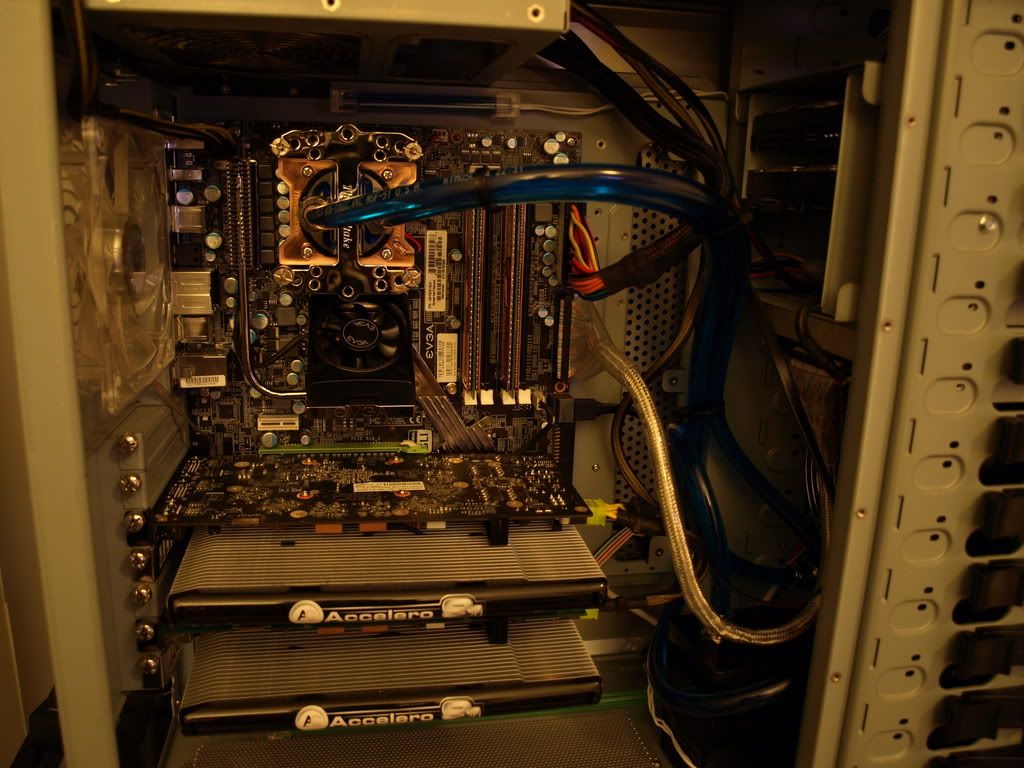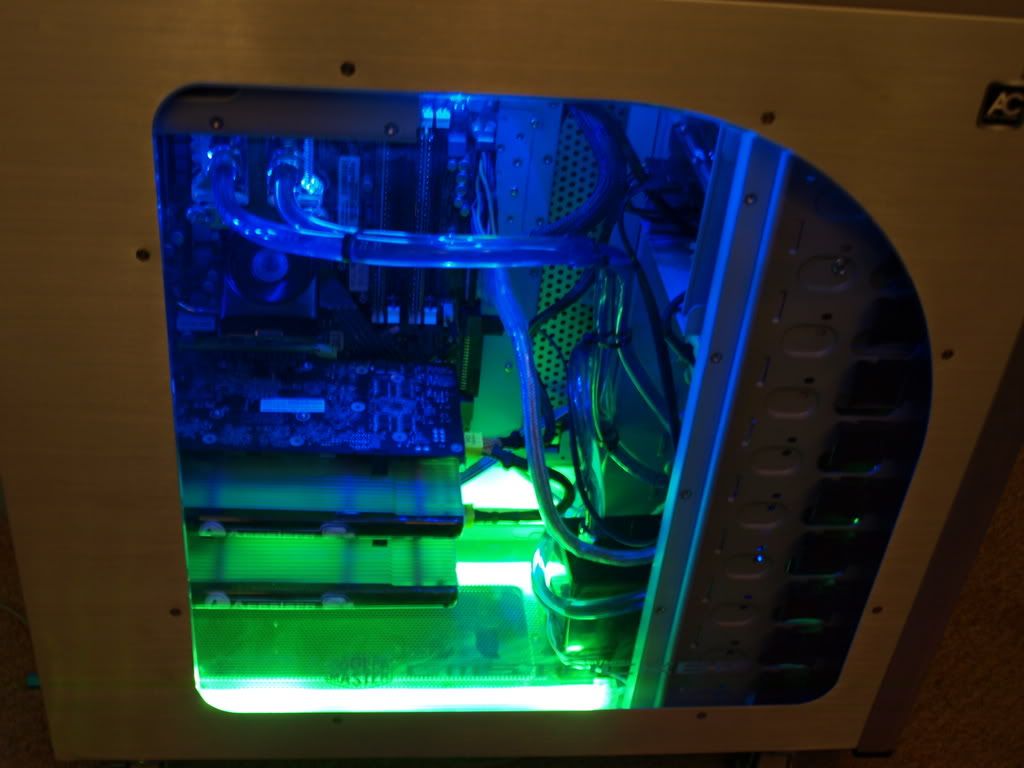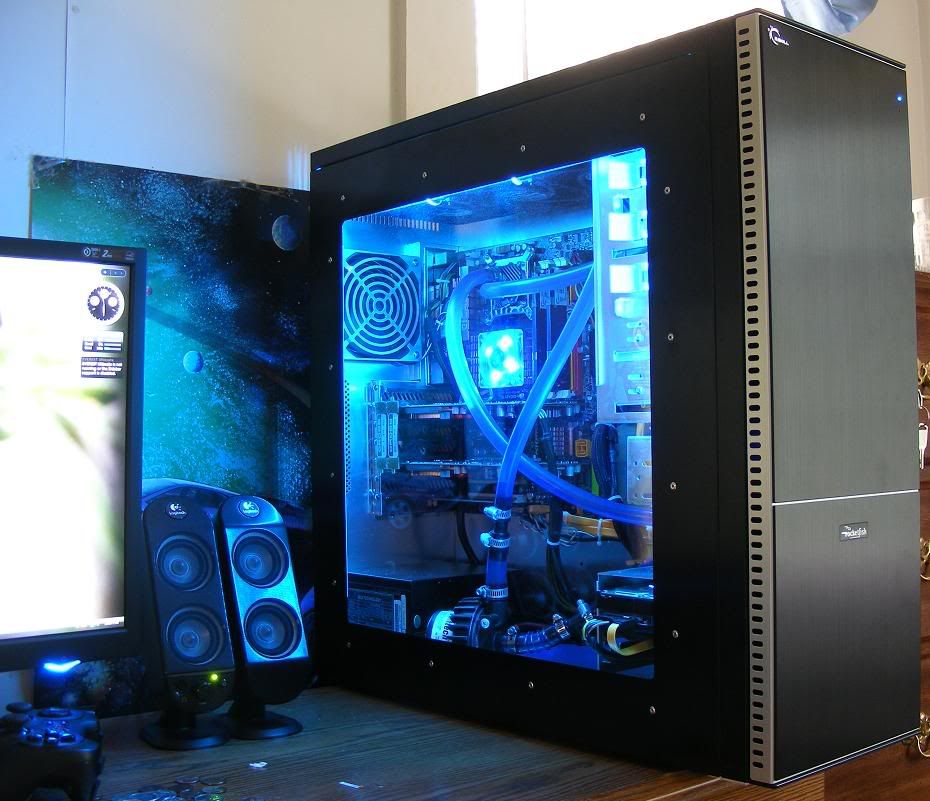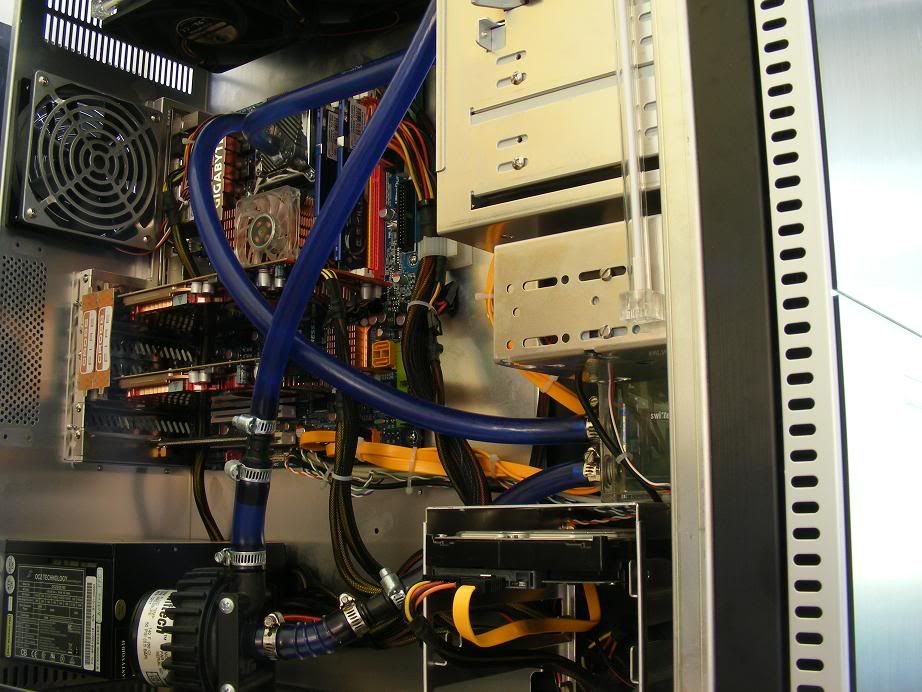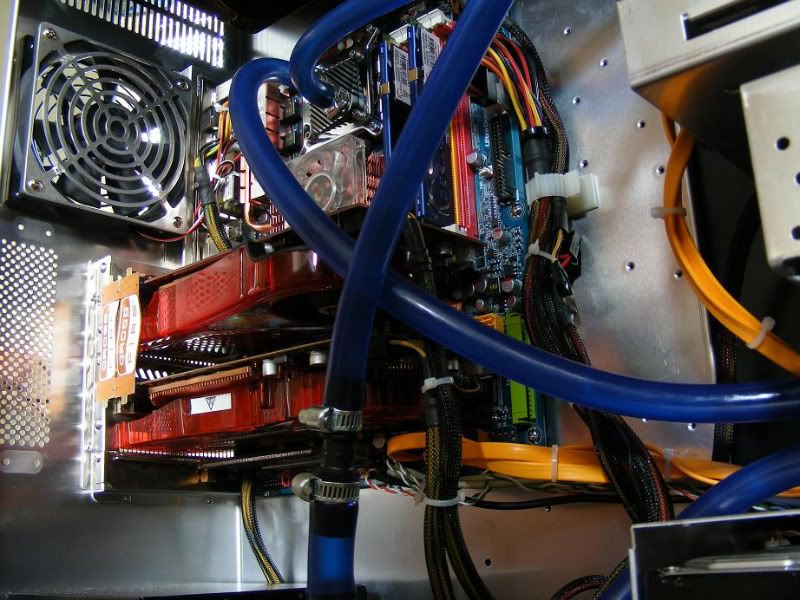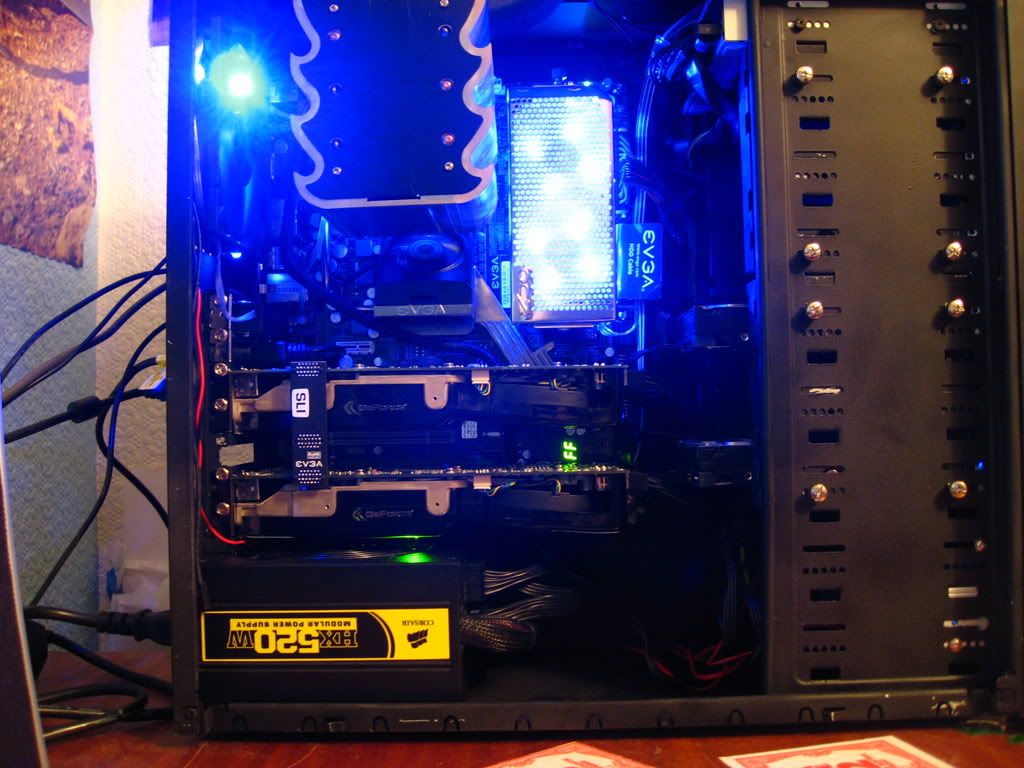Kornowski
VIP Member


I thought it'd be a good idea for all the people that own an SLI or CF rig to share information and experiences. Also, I want to try and fill this thread with as much information as I can so that people thinking of going down the multiple card road can look here and find out what they need to know, or ask.
Feel free to post your pictures of your multiple card setups!
First off, a brief history of the two (Taken from Wikipedia);
SLI's History
Scalable Link Interface (SLI) is a brand name for a multi-GPU solution developed by Nvidia for linking two or more video cards together to produce a single output. SLI is an application of parallel processing for computer graphics, meant to increase the processing power available for graphics.
The name SLI was first used by 3dfx under the full name Scan-Line Interleave, which was introduced to the consumer market in 1998 and used in the Voodoo2 line of video cards. After buying out 3dfx, Nvidia acquired the technology but did not use it. Nvidia later reintroduced the SLI name in 2004 and intends for it to be used in modern computer systems based on the PCI Express (PCIe) bus. However, the technology behind the name SLI has changed dramatically.
The name SLI was first used by 3dfx under the full name Scan-Line Interleave, which was introduced to the consumer market in 1998 and used in the Voodoo2 line of video cards. After buying out 3dfx, Nvidia acquired the technology but did not use it. Nvidia later reintroduced the SLI name in 2004 and intends for it to be used in modern computer systems based on the PCI Express (PCIe) bus. However, the technology behind the name SLI has changed dramatically.
CF's History
CrossFire (also CrossFire X after release of the Spider desktop platform on November 19, 2007) is a brand name for ATI Technologies' multi-GPU solution, which competes with Scalable Link Interface (SLI) from NVIDIA. The technology allows up to four graphics cards to be used in a single computer to improve graphics performance. Although only recently announced for consumer level hardware, similar technology known as AMR has been used for some time in professional grade cards for flight simulators and similar applications available from Evans & Sutherland, ATI had also previously released a similar dual RAGE 128 consumer card called the Fury MAXX.
A little information on each (Taken from Wikipedia, edited and information added by me);
SLI Information < Click for more information
The basic idea of SLI is to allow two or more graphics processing units (GPUs) to share the work load when rendering a 3D scene. Ideally, two identical graphics cards are installed in a motherboard that contains two PCI-Express x16 slots, set up in a master-slave configuration. Both cards are given the same part of the 3D scene to render, but effectively half of the work load is sent to the slave card through a connector called the SLI Bridge. As an example, the master card works on the top half of the scene while the slave card works on the bottom half. When the slave card is done, it sends its output to the master card, which combines the two images to form one and then outputs the final render to the monitor.
In its early implementations, motherboards capable of SLI required a special card which came with the motherboard. This card would fit into a socket usually located between both of the PCI-Express x16 slots. Depending on which way the card was inserted, the motherboard would either channel all 16 lanes into the primary PCI-Express x16 slot, or split lanes equally to both PCI-Express x16 slots. This was necessary as no motherboard at that time had enough PCI-Express lanes for both to have 16 lanes each. Thanks to the advancement in available PCI-Express lanes, most modern SLI-capable motherboards allow each video card to use all 16 lanes in both PCI-Express x16 slots.
The SLI bridge is used to reduce bandwidth constraints and send data between both graphics cards directly. It is possible to run SLI without using the bridge connector on a pair of low-end to mid-range graphics cards (e.g. 7100GS or 6600GT) with Nvidia's Forceware drivers 80.XX or later. Since these graphics cards do not use as much bandwidth, data can be relayed through just the chipsets on the motherboard. However, if no SLI bridge is used on two high-end graphics cards, the performance suffers severely as the chipset does not have enough bandwidth. nVidia have released a few cards along the time line that have been multiple card set-ups, in one card. Such examples include the 7950GX2 and the 9800GX2. These are two cards in SLI which on require one PCI-e bus.
In its early implementations, motherboards capable of SLI required a special card which came with the motherboard. This card would fit into a socket usually located between both of the PCI-Express x16 slots. Depending on which way the card was inserted, the motherboard would either channel all 16 lanes into the primary PCI-Express x16 slot, or split lanes equally to both PCI-Express x16 slots. This was necessary as no motherboard at that time had enough PCI-Express lanes for both to have 16 lanes each. Thanks to the advancement in available PCI-Express lanes, most modern SLI-capable motherboards allow each video card to use all 16 lanes in both PCI-Express x16 slots.
The SLI bridge is used to reduce bandwidth constraints and send data between both graphics cards directly. It is possible to run SLI without using the bridge connector on a pair of low-end to mid-range graphics cards (e.g. 7100GS or 6600GT) with Nvidia's Forceware drivers 80.XX or later. Since these graphics cards do not use as much bandwidth, data can be relayed through just the chipsets on the motherboard. However, if no SLI bridge is used on two high-end graphics cards, the performance suffers severely as the chipset does not have enough bandwidth. nVidia have released a few cards along the time line that have been multiple card set-ups, in one card. Such examples include the 7950GX2 and the 9800GX2. These are two cards in SLI which on require one PCI-e bus.
CF Information < Click for more information
With the release of the Radeon X1950 Pro (RV570 GPU), ATI has completely revised CrossFire's connection infrastructure to further eliminate the need for past Y-dongle/Master card and slave card configurations for CrossFire to operate. ATI's CrossFire connector is now a ribbon-like connector attached to the top of each graphics adapter, similar to nVidia's SLi bridges, but different in physical and logical natures.[5] As such, Master Cards no longer exist, and are not required for maximum performance. Two dongles can be used per card; these were put to full use with the release of CrossFire X. Radeon HD 2900 and HD 3000 series cards use the same ribbon connectors, but the HD 3800 series of cards only require one ribbon connector, to facilitate CrossFire X. Unlike older series of Radeon cards, different HD 3800 series cards can be combined in CrossFire, each with separate clock control.
Since the release of the codenamed Spider desktop platform from AMD on November 19, 2007, the CrossFire setup has been updated with support for a maximum of four video cards with the 790FX chipset; the CrossFire branding was then changed to "ATI CrossFire X". The setup, according to internal testing by AMD, will bring at least 3.2x performance increase in several games and applications which required massive graphics capabilities of the computer system, the setup is targeted to the enthusiast market. A later development include a dual GPU solution that was released in early 2008, the "ATI Radeon HD 3870 X2", featuring only one CrossFire connector for dual card, four GPU scalability.
Since the release of the codenamed Spider desktop platform from AMD on November 19, 2007, the CrossFire setup has been updated with support for a maximum of four video cards with the 790FX chipset; the CrossFire branding was then changed to "ATI CrossFire X". The setup, according to internal testing by AMD, will bring at least 3.2x performance increase in several games and applications which required massive graphics capabilities of the computer system, the setup is targeted to the enthusiast market. A later development include a dual GPU solution that was released in early 2008, the "ATI Radeon HD 3870 X2", featuring only one CrossFire connector for dual card, four GPU scalability.
Drivers
nVidia's Drivers can be found HERE.
ATI's Drivers can be found HERE.
Multiple Monitors
Multiple Monitors can be used with both SLI or CF, despite what people may say. It used to be the case that you'd have to either disable SLI / CF and have each card render it's own separate monitor or have an extra PCI card to render your second monitor, while you have the two other cards in SLI / CF render your main monitor. Now both companies have released drivers that allow more than one monitor to be used whilst still having SLI / CF enabled.
SLI - Any driver past 180.xx will allow the use of more than one monitor
CF - Any driver past ? Anybody fill me in here?
FAQ's
Q: I have a question that has been niggiling me not that i can afford sli but what i dont get is how do you connect the screen to the card do you have 2 leads going into one or something? sorry if this sounds noobish
A: You see in the picture mac550 posted? All the cards (in that picture 3, normally only 2) are connected via something known as a bridge (the thing that has SLI written on it). This allows the cards to communicate with each other. Then, you plug your monitor into the top card and bam!
I will add questions and answers here once people ask some, or I find some. Or people suggest some, whatever. lol
Last edited:


